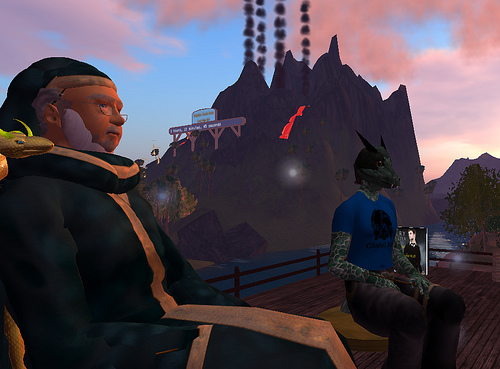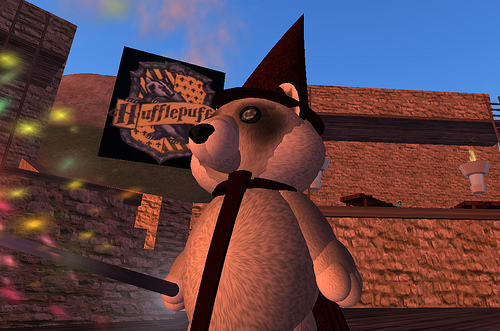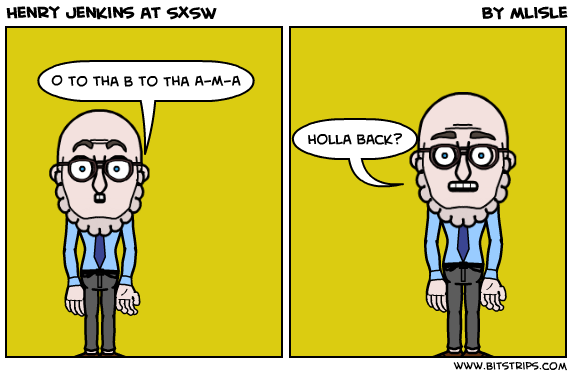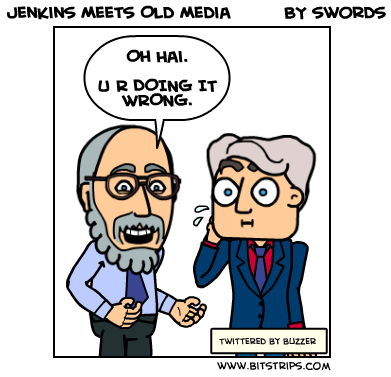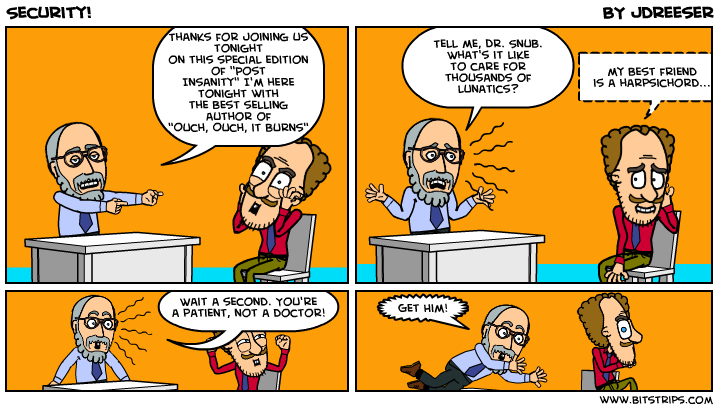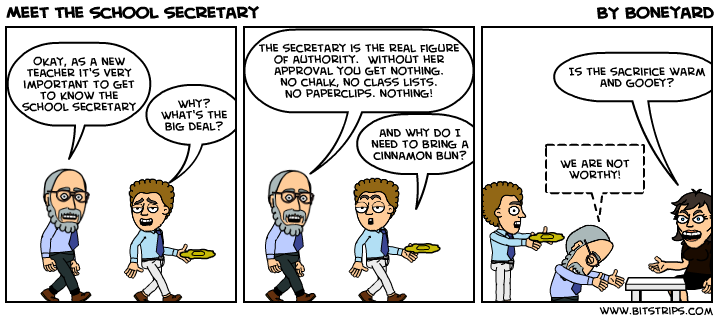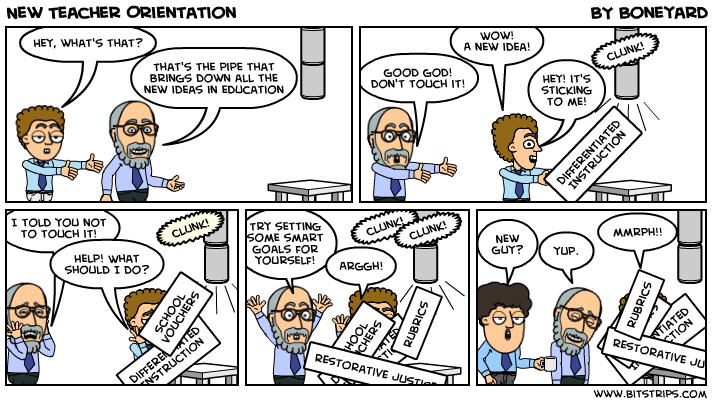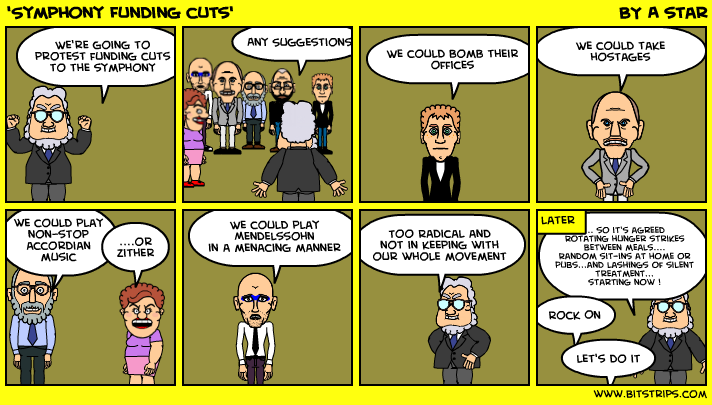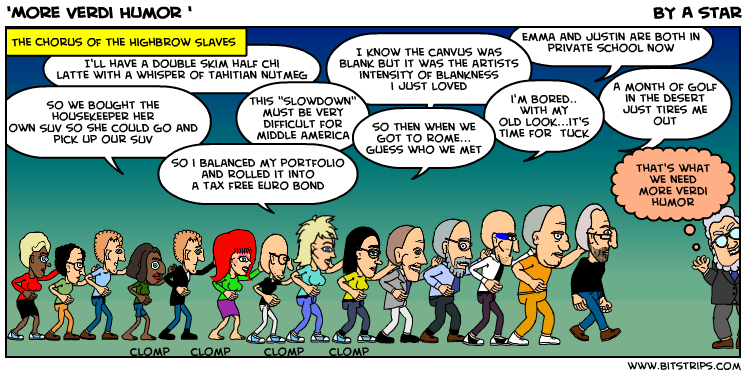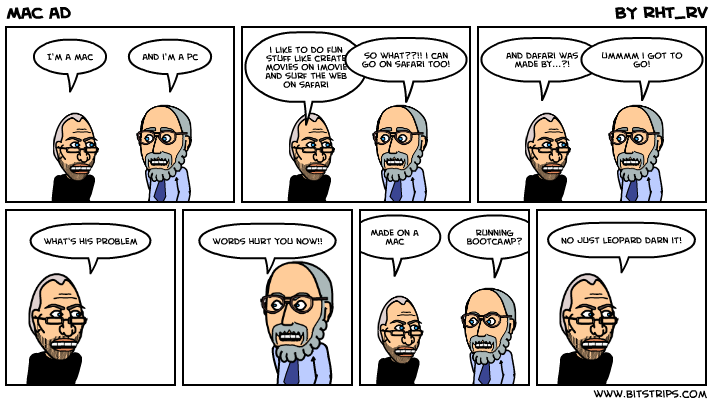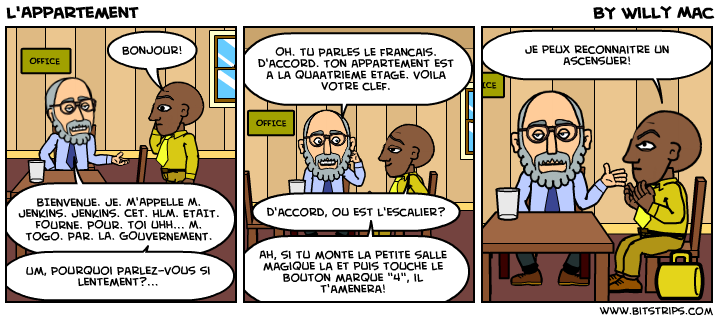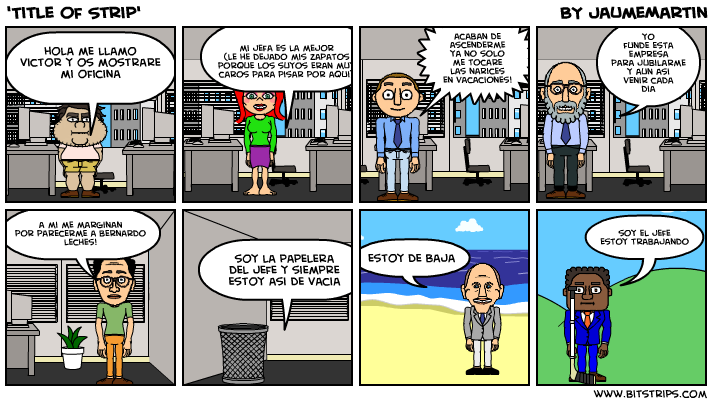"What Is Remix Culture?": An Interview with Total Recut's Owen Gallagher (Part Two)
/What criteria should we use to evaluate good and bad remixes?
I think that, as with any work of art, the criteria for judging whether a remix is 'good' or 'bad' is largely subjective and what some people passionately love, others will think is a complete waste of time. I believe there is no artistic work in existence that everyone on planet earth would unanimously agree is 'good.'
Having said that, for the purposes of the Total Recut Video Remix Challenge, I have set some general criteria for the public and for the judges to use as guidelines when rating the videos. These are overall impact, which will account for 50% of the marks, creativity for 25% and communication for the remaining 25%. If you were to analyse a video remix that is generally accepted as being 'good', for example Titanic 2: the Surface by Robert Blankenheim, we can see that the video is exceptionally well produced, so much so that you could easily believe that is a genuine trailer for a new Titanic movie! The basic idea behind the piece is very clever and well executed on every level. Personally, I think that believability is a recurring theme in many of the most popular and well received video remixes. For these types of remixes, it is a huge challenge to convince the viewers that what they are watching is real. There is a long history of people messing with media channels to communicate a message effectively, e.g. Orson Welles War of the Worlds broadcast and I feel that speaking to an audience in a language that they are intimately familiar with, e.g. movie trailers, is an excellent way to communicate a message. The Adbusters movement have been 'culture-jamming' for decades, mostly in the medium of print, but I expect a lot of video remixed work to emerge in this niche in the future.
But what about 'bad' remixes? Well, it is fantastic to see that so many amateur video makers are trying their hand at producing video remixes, however, as with every art form, the ratio is usually about 10% quality, 90% garbage. The ratio holds true in the case of video remixes. Here is an example of a particularly poor effort, but hopefully the creator will stick at it and improve as they produce more work. Having said that, production skills are not necessarily the be all and end all. Sometimes, the idea is strong enough to bring the video popularity even if the production values are not 100%.
An interesting debate has sprung up around so-called 'YouTube Poop' videos. To some people, these types of videos seem to make no sense, are offensive and are even difficult to watch. People said similar things about punk. Personally, I think that YouTube Poop videos are some of the most potent examples of remixed videos out there, and although they may not be attempting to communicate a particular underlying message, bearing more resemblance to stream-of-consciousness poetry, they have their own artistic merit. But I am certain that many people would consider them to be 'bad' remixes.
The statement above implies that you think the current influx of remixes and recuts is a product of shifts in the technological environment. Yet, we could point to a much older history of cut-ups, collages, montages, scratch video, fan video, running back across much of the 20th century. Remix was part of 20th century life well before digital tools and platforms arrived. What factors do you think have given rise to our current remix culture?
I agree with you that remix itself is by no means a new phenomenon. In fact, it dates back as far as we can trace human history. The earliest example I am aware of is the anagram, which is essentially taking the building blocks of a word, i.e. the letters, remixing them into a new order that creates a new word and a secondary meaning and association by connecting the first word to the newly formed second word. There have been examples of remix in every creative art since time immemorial. For example, in art, the obvious one is collage. In music, folk music was spread by word of mouth, and so when one person would learn a new song from someone else, they would often apply their own variations to it, essentially remixing it to suit their own style.
In more recent times, in the history of recorded music, music remixes date back at least to the 1950's, when Bill Buchanan and Dickie Goodman remixed Orson Welle's War of the Worlds with various musical snippets. In the world of film and video, recuts and remixes have been in existence since the art of editing was invented. Some of the most well known filmmakers that experimented in the field of remix and montage as far back as the 1920s include the Russians, Sergei Eisenstein and his mentor Lev Kuleshov. Joseph Cornell and Hans Richter also experimented in the genre in the early part of the 20th Century.
The distinct difference between the work that was produced by these masters and the video remixes that we see today on Total Recut and YouTube, are that now the tools of production have been democratized. What was once an art form confined to professionals who could afford expensive film-making equipment and distribution companies with established networks and connections, is now affordable to the majority of creators in the western world. Anyone with a computer and an internet connection today can produce and distribute their work for costs close to zero. Every new computer comes shipped with editing software, video content is widely available on video sharing networks like YouTube and the Internet Archive, and it is easy to reach a potentially large audience by uploading your video to one of these sites.
The net result is that the medium is evolving. Video remix includes everything from movie trailer recuts, political parodies, music mash-ups, subvertisements, fan made vids, machinima, overdubs and many others. There is no doubt in my mind that many other sub-genres will evolve as more and more people begin to experiment in this area.
In your thesis, you suggest that video recuts are "stifled by overzealous copyright owners who are over-protective of their work." What can you tell us about current legal responses to the remix community? Are there any signs that the studios are becoming more accepting of remix culture as remixes become more widespread on sites like YouTube and are finding their way back into commercial media channels?
Of recent times there has been a serious crackdown on video sites like YouTube where copyright owners have made claims of copyright infringement and the videos have been taken down, in compliance with the DMCA. Unfortunately, many remixed videos that legitimately make fair use of copyrighted content are being caught in the crossfire of outright piracy. I feel it is very important to highlight the distinction here as this is possibly the number one reason why the remix community gets targeted and bullied by 'overzealous' copyright owners. If somebody rips an episode of Lost from DVD, for example, and uploads five ten minute segments of the episode to YouTube unchanged and without permission, this is piracy and should definitely not be condoned. ABC Studios would be completely within their rights to request that YouTube remove these infringing videos from their site. However, if someone were to sample small clips from various episodes of Lost, recut them, add effects and overlay a soundtrack from the classic 80's TV show The A-Team, this would clearly be a fair use of the copyrighted material.
Unfortunately, the filtering technology that has been developed to track copyrighted material cannot distinguish between these different types of videos, and fair use video remixes are being wrongfully taken down from YouTube every day. One of the problems here is that the creators of these ingenious videos are unaware that they are within their rights to file counter notifications against copyright infringement claims that they believe to be false. In my own case, I had three of my remix videos removed by the BBC, Paramount Pictures and 20th Century Fox, which led to my YouTube account being disabled. Three strikes and you're out. Each of the videos were less than three minutes long, and the use of copyrighted material in them was clearly fair use. I filed counter notification claims with each of the allegators through YouTube, which is a relatively straightforward process. The BBC conceded that my video was a fair use and the other two companies did not respond within the DMCA time limit and so my three videos were put back up and my account was reinstated.
I am certain that there are many other people out there who have had similar experiences but did not realise they could do anything to get their videos put back up. I would encourage anyone who feels that their work is fair use to file counter notifications and to make sure that their videos are put back online. Alternatively, they can upload them to Total Recut!
On a more positive note, I have noticed a trend among some of the larger media corporations that suggests that they are becoming more accepting of user generated remix videos that sample from their copyrighted material. Some, including Sony Pictures, Lionsgate and Warner Bros have even dabbled with remix contests of their own to coincide with the release of their movies including School of Rock, A Scanner Darkly and Rambo. We have also recorded a significant exponential increase in the number of video recuts being uploaded to the web every day and less being taken down, which suggests that more people are getting interested in the area and that copyright owners are beginning to realise the potential benefits of allowing, and possibly even encouraging their fans to play with the content they produce.
In my opinion, video remixes are a free form of advertising for copyright owners and also create more devoted fans of the original work. In a few years, we will all look back and it will be mind boggling to think that big media companies tried to stop fans of their content from creating remixed videos that actually served to promote the original work, as well as being entertaining pieces in themselves.
Your site features a space for political remixes. Do you see remix as an important form of political speech?
I personally feel that remix is one of the best ways for people to voice their opinions and increase their chances of being heard. What better way is there of communicating how you would like George Bush to act than to literally change the words that come out of his mouth? With the current build up to the presidential elections in the United States, we are seeing and hearing a lot of media surrounding the actions and words of Barack Obama, Hillary Clinton and John McCain. A plethora of remixed videos have sprung up with Obama , Clinton and McCain as the subjects. I think that having the tools to be able to create videos like these and express personal opinions to a wide audience is extremely empowering for individual users in the digital age. Members of Obama's campaign realise the potential power of grass roots creativity and a video contest has been hosted this month by the folks at moveon.org with a view to creating a 30 second spot for the presidential candidate that will air on national television. No doubt, many of these will be video remixes and we look forward to seeing the finished pieces.
Many people use political parodies as a way to highlight the issues that particular politicians are facing and suggesting courses of action. When Tony Blair was considering his resignation as Prime Minister, a fantastic remix appeared illustrating Blair's internal debate. Another classic video that has done the rounds is the Blair Bush Endless Love remix. This video is interesting in that it pokes fun at the perceived notion of the apparently odd relationship between a submissive Tony Blair and a dominant George Bush.
I have tried my own hand at one or two political remixes in the past. Being from Ireland, I decided to poke a little fun at the two candidates for the Irish General elections last year, Bertie Ahern and Enda Kenny, the two candidates for Taoiseach (Prime Minister) of the country at the time. One video showed Enda Kenny as if he was auditioning for American Idol and coming up against a decidedly unimpressed Simon Cowell. The other clip showed Bertie Ahern as if he were pitching a business idea in the Dragons Den I think it is very important that citizens of a country can air their views about their political leaders, and I feel that video remix is one of the most powerful ways to do this.
What are your hopes for the future of remix culture? How do remixes relate to the larger Free Culture movement?
I see remix gradually becoming more mainstream and more widely accepted as a creative form in its own right. Ever more examples of commercialised remix are appearing on our TV and computer screens every day. Many people involved in remix culture detest the idea of the commercialisation of this type of work as they see it as a grass roots, perhaps even rebellious movement, and one that gives a voice to the individual. I don't see this going away. Even if a lot more commercial remix work is created, the tools that enable individuals to transform and recreate the media and culture around them and the new channels of free distribution that enable their work to reach huge audiences are here to stay. My hopes for the future of remix culture would be for this type of work to seep into all walks of life. I would love to see even more educational institutions adopting it as a technique of learning, for example, asking students to create a remixed video about George Washington rather than handing in a written report. In the professional arena, I would love to see more video remix artists being headhunted by studios based on the remix work they showcase online or being commissioned to create new work.
Before this can happen, however, remix artists need to stop being afraid of frivolous legal threats. A large number of remix artists are very careful about revealing their true identities online and use anonymous alter-egos for fear of being sued. I would hope that remix artists will eventually feel as though they don't need to do this anymore, as it could be stifling potential opportunities for them. The copyright issues surrounding remix work are a headache for everyone interested in freely expressing themselves using digital media. Of course, fair use enables the use of small samples of copyrighted material for non-commercial purposes, but I envisage new business models emerging around copyright cleared remix work in the not too distant future.
In terms of the larger Free Culture movement, there are many people and organisations doing fantastic work to help combat the ongoing problem of corporate greed that has seen the copyright term extended to a ridiculous degree in the latter half of the 20th century. Organisations such as Creative Commons, the Electronic Frontier Foundation, the Center for Social Media, the Convergence Culture Consortium and FreeCulture.org are all doing incredible work to prevent the scales from tipping too far in the wrong direction and of course individuals, such as our judging panel for the Total Recut Video Remix Challenge, provide invaluable insights through their written and spoken words that help to raise much needed awareness of the issues surrounding remix culture.
We are hosting the Total Recut Remix Challenge primarily to the same end, and we invite anyone with an interest in this area to enter the contest and help us to raise awareness of the changes that need to take place so that we can build a society where copyright owners are fairly rewarded for their artistic labours and artists can freely express themselves by drawing inspiration from the culture around them. Every voice counts.


